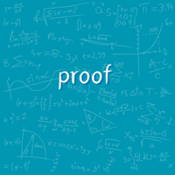
Overview
Synopsis
Catherine has inherited her late father’s mathematical brilliance, but she is haunted by the fear that she might also share his debilitating mental illness. She has spent years caring for her now-deceased father, and upon his death, she feels left alone to pick up the pieces of her life without him. Caught between a new-found connection with Hal, one of her father’s former students, and the reappearance of her sister, Claire, Catherine finds both her world and her mind growing increasingly unstable. Then Hal discovers a groundbreaking proof among the 103 notebooks Catherine’s father left behind, and Catherine is forced to further question how much of her father’s genius or madness will she inherit. Winner of the Pulitzer Prize for Drama, David Auburn’s Proof is a passionate, intelligent story about fathers and daughters, the nature of genius, and the power of love.
Show Information
Context
From the moment it first opened Off-Broadway in May of 2000, Proof met with tremendous critical acclaim. It won the Drama Desk Award for Best New Play, the Lucille Lortel Award for Outstanding Play, The New York Drama Critics’ Circle Best Play Award, and – most notably – the 2001 Tony Award for Best Play and the 2001 Pulitzer Prize for Drama.
Proof premiered at the Manhattan Theatre Club in a production directed by Daniel Sullivan. It sold out nearly its entire run on opening night,
to read the context for Proof and to unlock other amazing theatre resources!Plot
Act One
Scene 1
Proof opens on the back porch of a home in Hyde Park, Chicago, very late at night. Robert points out to his daughter, Catherine, that it is past midnight and thus it is now her twenty-fifth birthday. They celebrate by toasting with champagne. Robert and Catherine reminisce about her childhood. Robert suggests to Catherine that if she can’t sleep, perhaps she should do some mathematics, an idea that Catherine vehemently dismisses. Robert calls her lazy, expressing
to read the plot for Proof and to unlock other amazing theatre resources!Characters
| Name | Part Size | Gender | Vocal Part |
|---|---|---|---|
|
Lead |
Female |
Spoken |
|
|
Lead |
Male |
Spoken |
|
|
Supporting |
Female |
Spoken |
|
|
Supporting |
Male |
Spoken |
Songs
A song with an asterisk (*) before the title indicates a dance number; a character listed in a song with an asterisk (*) by the character's name indicates that the character exclusively serves as a dancer in this song, which is sung by other characters.
Monologues
Scenes
Key Terms
The antagonist is a character who opposes the protagonist and creates conflict within the story. They are not always villains but are critical to the development of dramatic tension.
A character arc is the journey of personal growth, change, or transformation that a character undergoes throughout a play or musical. It often involves overcoming internal or external obstacles, leading to a deeper understanding of oneself or others. Strong arcs help audiences connect emotionally with characters and give structure to the overall narrative.
The moment of highest tension in a play, usually where the main conflict reaches a turning point.
The central struggle between opposing forces in a play, driving tension and character development.
Exposition is the presentation of background information necessary to understand the story, such as setting, character relationships, and prior events. It is often delivered through dialogue, narration, or stage action woven naturally into the play. Effective exposition provides clarity without disrupting the flow of the drama.
A dramatic device that transports the narrative to an earlier time to provide background or context.
The main character of a play or story, typically the one whose journey or conflict drives the plot. The protagonist often experiences growth or change.
A theatrical movement that strives to depict everyday life and authentic behavior on stage. It often focuses on domestic settings and psychological depth.
The portion of a play where conflicts are resolved and the narrative concludes. It follows the climax and restores order or provides closure.
Subtext refers to the unspoken thoughts, emotions, or intentions that lie beneath a character’s dialogue or actions. It provides depth and complexity to performances, allowing audiences to sense hidden conflicts or desires. Directors and actors often rely on subtext to create nuance and tension in storytelling.
Videos
Quizzes
Themes, Symbols & Motifs
Themes
Genius and Madness
The central theme
to read about the themes, symbols and motifs from Proof and to unlock other amazing theatre resources!Quote Analysis
Sorry! We do not currently have learning modules for this guide.
